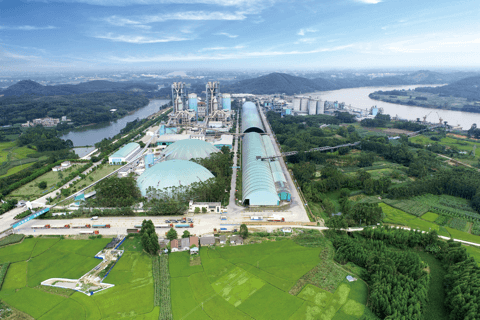1.Formulation technology for high-early-strength cement:
Currently, the biggest problem encountered during the production of prefabricated construction components is the low high-early strength of concrete, which prolongs the demold time, lowers the turnover rate of molds and increases production costs. Therefore, we need to develop a high-early-strength cement for prefabricated construction components. With high-early-strength concrete, the demold time can be greatly reduced, the manufacturing cycle and production costs of prefabricated construction components can also be lowered without steam curing of concrete.
2.Development and application research for inorganic engineered stone products:
Researches and develops more environmentally friendly inorganic engineered stone with better comprehensive performance in order to fulfill diversified needs of real estate enterprises and design companies while consuming construction wastes during the production process.
3.Fire alarm system for electrical control cabinet and cable vault:
The smoke alarm system is slow to respond at present. Even if the alarm is given, the fire can no longer be controlled when measures are taken, which can cause long-term production suspension and huge loss in severe cases. Hence, it is necessary to transform with the assistance of external forces or technologies such that when fire occurs, it can be noticed at once to cut off the power supply and extinguish the fire, and the loss can be minimized.
4.Sludge disposal project:
Cooperative sludge disposal is promoted in large and mid-sized cities. Through the construction and operation of the Yuebao sludge disposal project of China Resources Cement, the design requirement of reaching 600t/ d of sludge drying capacity was realized, and zero emission of wastewater, exhaust gases and waste residues was guaranteed. After the completion of construction, it can well solve the problem of sludge treatment and disposal in Guangzhou and its surrounding areas, and serve as an important demonstration for the development of circular economy in Guangdong province as well as other major cities in China.
5.Automation of ship loading and unloading:
The existing ship unloaders have high requirements for operators’ operating skills and high labor intensity. Therefore, operators are difficult to recruit, with high mobility and long training time. Through the automation of ship loading and unloading, the operation difficulty is lowered, the workload of operators is reduced and the operation efficiency is improved.
6.Technical application of industrial CT technology in cement industry: Introduction of nondestructive testing method of industrial CT into cement industry can display the cross-section image of the tested work piece and locate and measure the defective parts, realizing the operation observation of the internal equipment such that signs of latent damage can be promptly discovered, reducing costs of the internal damage of equipment.
7.Intelligent control system for demand and supply balance of factory-wide water supply system:
It is necessary to set up a supply and demand balance system between the external pumping station and the water treatment station, and make unified and connected optimization with the river level, water supply, speed adjustment, as well as the automatic operation of the generator in order to achieve an automatic intelligent control system for supply and demand balancing and automatic switching.
8.Centralized intelligent lighting control system for on-site factory-wide patrol inspection:
In order to save energy on lighting to the largest extent, it is necessary to realize centralized lighting control factory-wide such that lighting is controlled by sections and districts when patrol inspection is taken place.
9.Blur control system for precise ammonia-spraying in denitration system:
The current denitration control system has not yet achieved the idealistic automatic tracking. It is expected to realize full automatic control of the ammonia flow control loop through the adjustment of the amount of ammonia according to the NOx emission by central operator. As a result, operator does not need to manually intervene in the opening of the ammonia control valve during operation and the regulation quality of the denitration system can be improved.
10.Automatic fire extinguishing of mining engineering machinery:
Mining engineering machinery such as hydraulic pipe system and the power line system are aging after 8 years of use, equipment is prone to fire due to pipe explosion or electrical short circuit during use. Hence, it is necessary to install automatic fire extinguishing system for engineering machinery to prevent spontaneous combustion of equipment.
11.Unmanned mining transportation:
Implementation of unmanned mining transportation, full-automatic control and loading weight control of limestone shipping vehicles can avoid risks such as vehicles getting out of control due to overweight. In addition, by realizing full-automatic control of shipping vehicles, vehicles and driving speed can be reasonably arranged, which reduces the waiting time and improves the efficiency of vehicles. Since no manual operation is needed, safety risks of workers are limited.
12. Automated cement loading system Requirement description:
Automatic operation of stacking bagged cement can be realized through the installation of the automated cement loading system. The system allows automatic counting, which reduces the management personnel for the loading of bagged cement. Moreover, it solves safety issues of workers and reduces occupational health hazards. However, the running speed of the equipment should be reasonably controlled in order to prolong the service life of the equipment and reduce the maintenance workload.
13. CCDES expert system of fine management for cement clinker production Requirement description:
The CCDES expert system of fine management for cement clinker production is introduced. The fine management platform for cement clinker production is realized by applying the Internet and cloud data technology using data monitoring such as the temperature of kiln firing zones.









